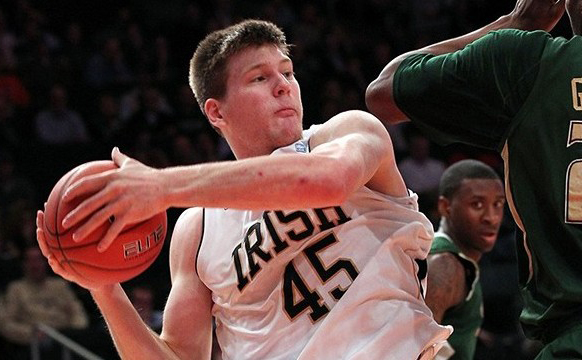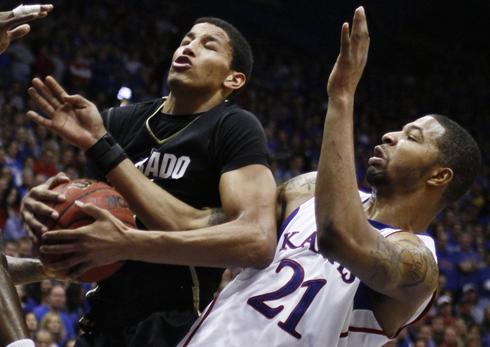Six X-Factors Who Will Elevate Their Teams This Season
Posted by Chris Johnson on November 7th, 2012Chris Johnson is an RTC Columnist. He can be reached @ChrisDJohnsonn.
“Most valuable” or “Most Important” has always seemed like an incredibly fuzzy concept to define. Statistical greatness doesn’t do it justice. Neither does sheer talent differential – is a player important just because the rest of his team isn’t very good? Such crude measures don’t take into account other vague elements that often go into describing these players. All in all, given the indeterminate criteria used, arguments can be made for a handful of different players any given year. Amid all the uncertainty, one thing remains clear: These players are indispensable to their respective teams. They are the underlying force that sets the course for a strong season, that fuels the competitive motor for five months and upwards of 30 games, that captivates fan bases and crushes opponents’ dreams. You may not have a grounded explanation for why these players are so very crucial. You just know. It’s one of the reasons singling these guys out is highly subjective. So bear with me as I reveal one player from each power league whose value transcends analytical or statistical strength, and whose importance can’t be boxed into any single dimension. They are their teams’ X-factors, and that’s all you need to know.
Three qualifying parameters: The mid-major ranks are littered with teams whose winning formula relies heavily on one player. In the interest of narrowing the focus of this expansive and rather ambiguous category, they will be excluded here. Selections will also be geared towards teams with credible conference and national championship aspirations. Lastly, there are no freshmen included here (here’s a fresh look at this season’s batch of impact newcomers).
North Carolina – James Michael McAdoo

So much of North Carolina’s offensive output will rely on McAdoo’s development (photo credit: Getty Images)
There are few teams that can overcome losing three first-round draft picks and still have enough in the reserve ranks to retain their competitive equity. That is the challenge UNC faces this season following the departures of Tyler Zeller, John Henson and Harrison Barnes, who each played more than 66 percent of available minutes and combined to use 73 percent of their team’s possessions. Replacing such a large heaping of production will require a huge sophomore leap from McAdoo. While his playing time was limited last season thanks to the NBA-bound forwards in front of him, McAdoo arrived with McDonald’s All American-level hype and made good on that reputation in the little court-time he saw. He even contemplated leaving for the draft after last season, and many speculated he would have been taken as a lottery pick. Now he has a chance to elevate his draft stock in a central frontcourt role. UNC’s lack of complementary scorers will make McAdoo’s scoring responsibilities a significant component of their offensive calculus. Freshman power forward Brice Johnson should provide help on the glass, and senior Reggie Bullock is more than capable of raising his scoring output, but it will be incumbent upon McAdoo’s promising but somewhat unproven offensive game to keep the Tar Heels in the hunt for the ACC crown.
Myck Kabongo – Texas
There is the NBA factory they call Kentucky, where John Calipari has mastered the art of turning freshman into first-round picks and piling up wins along the way. Then there is Texas, who has has functioned very much in the same way during Rick Barnes’ tenure. Texas hoards top recruits, melds together young but talented rosters, and competes in the top half of the Big 12 on an annual basis. The main differences are twofold: 1) Longhorns players tend to stick around for more than a year, which makes Texas’ annual turnover far less drastic than Kentucky’s; 2) Texas doesn’t win like Kentucky. This season, the latter point will depend largely on how Kabongo progresses into his sophomore season. As a true freshman, Kabongo started all 34 games, finished fourth in the Big 12 in assists per game (5.2), while averaging 9.8 points per game and snatching 38 steals. Unlike departed guard J’Covan Brown, who commanded 31.5 percent of available shots and used 28.4 percent of possessions, Kabongo is a pass-first point guard in every sense of the word. The Longhorns’ offense starts and ends with his creativity at the point of attack, and with a highly-touted recruiting class on the way – which includes 2012’s No. 2-ranked center and No. 5-ranked player overall Cameron Ridley – Kabongo needs to integrate a host of new pieces into the offensive attack. Though marshaling Texas’s offensive tempo and threading defenses with precise passes is Kabongo’s strong suit, an improved offensive game will lead a strong second season.
Note: Kabongo’s eligibility for the upcoming season is under review while the NCAA looks into his relationship with an agent . His status remains uncertain.
Jack Cooley – Notre Dame

To open up space for the likes of Grant and Connaughton, Cooley must continue to dominate the low post (photo credit: US Presswire).
Generating consistent guard play and perimeter scoring probably doesn’t rank highly on Mike Brey’s list of concerns heading into this season. Point guard Eric Atkins is a savvy playmaker and one of the best ballhandlers in the country (he led the Big East in assist-to-turnover ratio in 2011-12). Sophomore Pat Connaughton is a bona fide long-range marksman, who – in one of the more underrated performances of the 2011-12 college basketball season – hit seven second-half threes to erase a 20-point deficit in an eventual overtime win over Villanova. Off-guard Jerian Grant (12.3 PPG, 4.9 APG) may be the most talented of the group. The backcourt is teeming with capable shooters, a perfect fit for Brey’s perimeter-oriented system. That system is at its best with a commanding inside presence clearing out the low block and crashing the boards and collapsing the defense. Cooley handled those responsibilities deftly last season, and he’ll need to repeat the act in 2012-13. He is the central cog of the Irish’s free-flowing style, the immovable force holding everything together. The Irish used Jack Cooley – whose similar features and body type are about as striking as any position-player lookalike – in similar fashion. Cooley is generating considerable buzz for the Big East Player of the Year award. And rightfully so — provided he mans the middle the way Brey expects, the award is Cooley’s to lose. The Irish need that type of transcendent season from their senior big man.
DeShaun Thomas – Ohio State
Parsing the nuances of Thomas and Cody Zeller’s relative importance to their respective teams, and weighing each player’s expectations and roles, I came to the conclusion that any definitive choice is a matter of degree, not type. As this preamble makes unequivocally clear, there are no hard-and-fast guidelines to gauging one’s value on such a subjective scale. In the end, I chose Thomas for a variety of reasons. For one, Indiana returns a cast of versatile scoring threats, from Will Sheehey to Victor Oladipo to Christian Watford to Jordan Hulls. Meanwhile, Ohio State, who for the past two seasons has centered its offensive focus on All-America forward Jared Sullinger, needs Thomas to blossom into a consistent double-figure scorer. Which isn’t asking much, really – Thomas averaged just under 16 points per game last season. It’s just that those points may not be as easy to come by this season, because without Sullinger – and the unrelenting defensive attention he attracted – Thomas will be forced to fend for himself on the low block. Guards Aaron Craft and Lenzelle Smith Jr. can score in bursts, but neither has shown the ability to carry the scoring load in any extended context. Thomas will get plenty of touches this season, many of them in isolation situations. If he can’t leverage a high percentage of those touches into points, the Buckeyes will labor to justify their high preseason rankings.
Andre Roberson – Colorado

Another NCAA Tournament run is well within reach should Roberson improve his offensive repertoire (photo credit: AP Photo).
Of all the questionable selections on the preseason conference polls being revealed in the lead-up to this season, Colorado’s projected sixth-place Pac-12 finish is easily the most controversial. It’s never wise to fall in love with a team based off the previous season’s postseason proceedings, but Colorado’s conference and NCAA Tournament run felt like more than some luck-infused late-season flash in the pan. The Buffaloes may have finished with a mediocre league record (11-7) in one of the worst versions of a high-major league in recent history (last year’s Pac-12 was really, really bad), but there are signs pointing to a more prolonged bout of success this season. At the center of it all is Roberson, a hyper-athletic 6’7’’ forward who posted the nation’s second-best defensive rebounding percentage (29.6%) while providing a diverse inside-out skill set on the other end of the floor. Roberson does most of his work inside, but his game is so much more than that (he also shot 38 percent from three last season). His progression will be crucial for a team who loses three seniors from last year’s starting lineup. Roberson’s role will be amplified as he embraces an even larger share of Colorado’s offensive and defensive responsibilities. Another strong season puts the Buffaloes in great position for another Tournament run. Roberson is more than capable of getting them there and, in the process, dispensing retributive justice on that curiously misguided preseason poll.
Jarnell Stokes – Tennessee
If you want a snapshot of the massive impact Stokes had on Tennessee’s bubble run last season, a cursory glance at the Volunteers’ win uptick (against much tougher SEC competition, mind you) following Stokes’ mid-year eligibility does a pretty decent job hammering it home. With Stokes in the lineup, Tennessee won 10 of its last 15 regular-season games before a SEC Tournament quarterfinal loss put an end to its late-season NCAA aspirations. The 6’8’’, 267-pound sophomore still needs to refine his offensive game, but if Stokes continues his rapid development, he has the tools to become one of the best all-around frontcourt assets in the country. He’s already an absolute beast on the glass – Stokes snared 21.3 percent of opponents’ misses while submitting a 12.1% mark on the offensive end – and saw his scoring totals increase towards the end of last season. Over the Volunteers’ final five games, Stokes averaged 12.8 points per contest. Compare that with his season average (9.6 PPG), and it’s clear Stokes’ offensive game came into its own as he grew more comfortable in the college game. It’s hard to remember that Stokes graduated from high school just last December. Less than a month later, with practically zero practice experience and having just turned 18 less than a week before, he played his first college game against Anthony Davis and Kentucky, which probably ranks near the top of the most veritably challenging debut match-ups. Stokes then played his way into the starting lineup, began to realize his immense physical potential and offensive promise, and nearly led the Volunteers to an NCAA bid. Beyond the near certainties presented by Kentucky and Missouri and Florida at the top of the league’s competitive echelon, the SEC is as wide open as any power conference. With Stokes wreaking havoc on the low block, Tennessee can challenge that elite group. Any credible regression from last year’s breakout campaign would leave the Volunteers out of the conference title conversation.












































